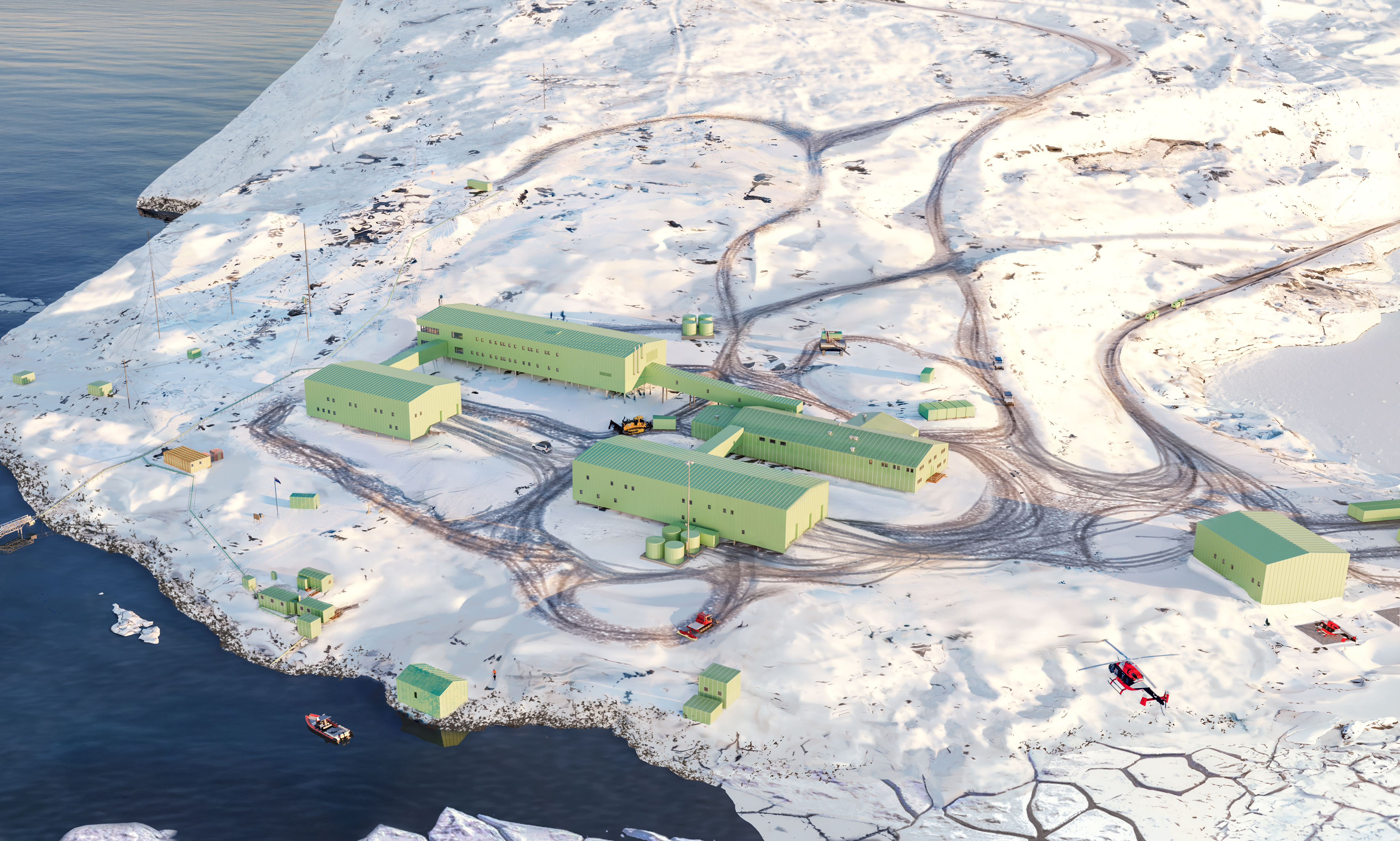
About
The Government has set aside $498m to redevelop Scott Base. Guided by the Scott Base Masterplan, the ageing infrastructure will be replaced in stages, starting with the oldest facilities and the Ross Island Wind Energy system. Scott Base is the strategic hub for scientists to carry out important research in an area that makes up New Zealand’s southern flank.
Why redevelop?
Scott Base has been continuously occupied since its establishment in 1957 and has had numerous upgrades and additions. The last major infrastructure investments occurred in the 1980s and mid-1990s and some of the buildings and facilities are at the end of their life. Without replacement or substantial upgrades, Scott Base will become too expensive to maintain or uninhabitable if critical systems begin to fail.
Strategic objectives
The Scott Base Redevelopment is underpinned by the following strategic objectives:
- Maintain a continuous presence in the Ross Dependency.
- Protect the Antarctic environment.
- Provide an environment that keeps people safe and healthy.
- Enable logistics to support and enhance high quality science.
- Maintain New Zealand’s credibility amongst Antarctic Treaty nations.
Building in Antarctica
Antarctica is the coldest, windiest and driest continent on the planet and building there is more challenging and expensive than a similar scale project in New Zealand. The average annual temperature at Scott Base is -19.8⁰C.

Seasonal windows
The Antarctic summer season runs from October through to February during 24 hour daylight. This is the only window where external construction can take place due to weather conditions and daylight. Only about 100 days of construction activity can take place in Antarctica per year, which means the project will take longer to finish than a similar build in New Zealand.

Self sufficient and resilient
Scott Base has to establish and maintain its own infrastructure, much like a small town. Not only does it need to be self-sufficient for electricity, heating, water, wastewater, fire suppression and communications, all plant and buildings must operate to a level of resilience that is significantly higher due to the extreme nature of Antarctica.

Difficult logistics
Due to its isolation, operating in Antarctica requires meticulous planning years in advance and Mother Nature calls the shots. Cargo can be either flown to the ice or transported via ship during summer after an icebreaker has cleared the path. With expensive shipping, short offload windows, flight delays and limited areas to stage equipment, multiple years of transportation is required.



